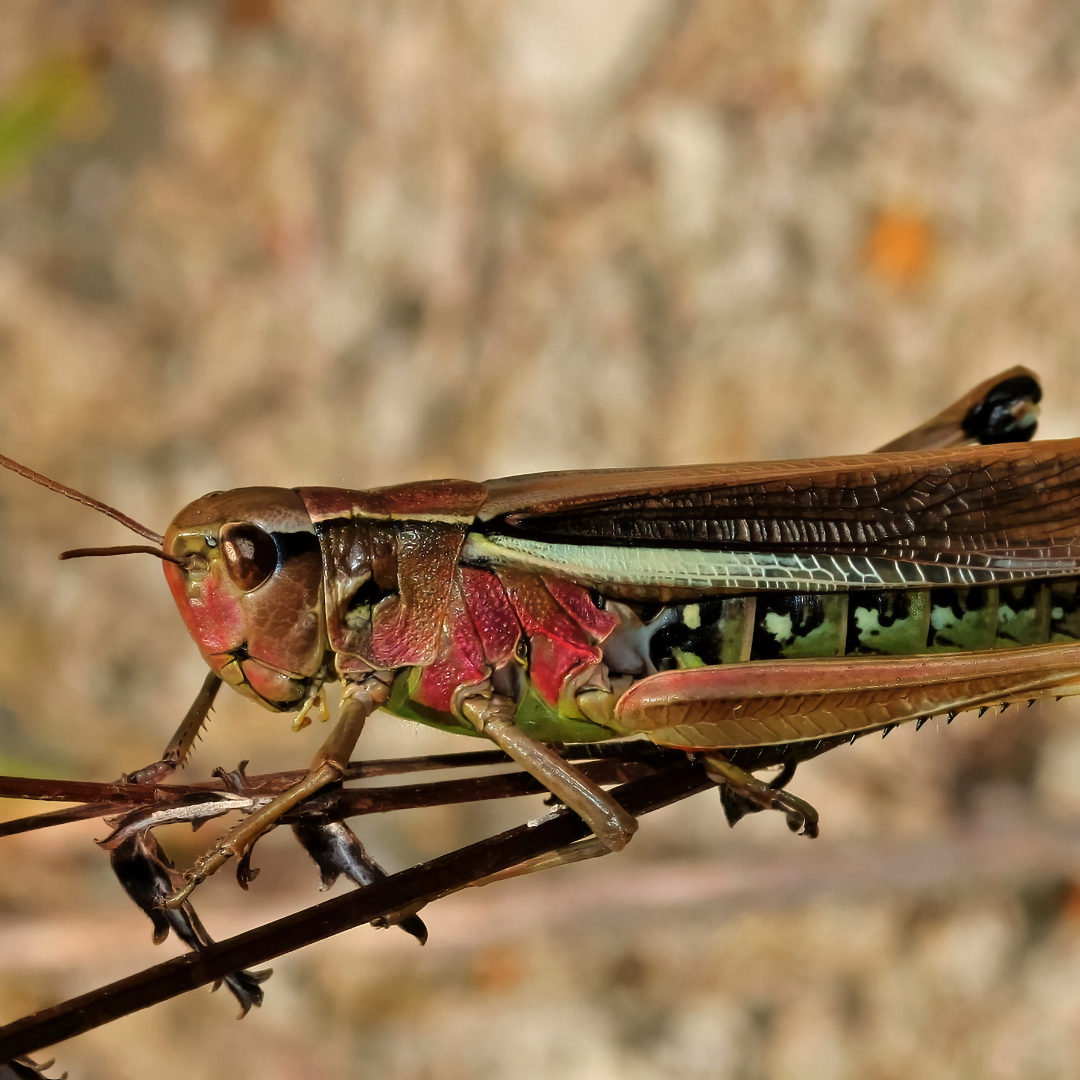Grasshoppers

Proud Supporter of Disabled Veterans
No Contracts
Services provided without written contracts.
Introduction to
Grasshoppers are fascinating insects known for their powerful hind legs, which allow them to leap great distances. Belonging to the order Orthoptera, these insects are common in grasslands, forests, and agricultural fields. While grasshoppers play a vital role in the ecosystem by serving as a food source for other animals, they can become pests when their populations grow too large, causing significant damage to crops and vegetation. Understanding the biology, habits, and effective prevention methods for grasshoppers is essential for managing their populations and minimizing their impact on agriculture.
Recognition
Grasshoppers are medium to large insects, typically measuring 1 to 2 inches (25 to 50 mm) in length. They have a robust body, large compound eyes, and long antennae. Their most distinctive feature is their powerful hind legs, which are adapted for jumping. Grasshoppers come in various colors, including green, brown, and yellow, often with markings that provide camouflage in their natural habitat. They have two pairs of wings: the forewings are narrow and leathery, while the hindwings are broad and membranous, used for short flights.
Biology
Grasshoppers undergo incomplete metamorphosis, progressing through three main life stages: egg, nymph, and adult. Females lay eggs in the soil, often in clusters called pods. The eggs hatch into nymphs, which resemble small, wingless adults. Nymphs go through several molts, gradually developing wings and reproductive organs. This process can take several weeks to months, depending on the species and environmental conditions. Adult grasshoppers are fully developed and capable of flight. They are known for their voracious appetite, feeding on a wide variety of plants, including grasses, crops, and garden plants.
Habits
Grasshoppers prefer warm, dry environments and are commonly found in grasslands, fields, and open forests. They are most active during the day, feeding on plants and basking in the sun. Grasshoppers are generalist feeders, consuming a wide range of vegetation, which can lead to significant agricultural damage when their populations are high. During periods of drought or food scarcity, they can migrate in large swarms, further increasing their impact on crops. Grasshopper populations fluctuate seasonally, with the highest numbers typically occurring in late summer and early fall.
Prevention
Preventing grasshopper infestations involves a combination of cultural, mechanical, and chemical control methods. Implement crop rotation and diversify plantings to disrupt grasshopper feeding patterns. Use physical barriers, such as row covers, to protect young plants. Maintain healthy soil and vegetation to reduce suitable egg-laying sites. Introduce natural predators, such as birds and beneficial insects, to help control grasshopper populations. In severe cases, apply insecticides or biological controls like Nosema locustae, a microbial pathogen that targets grasshoppers. Regular monitoring and early intervention are key to preventing large-scale infestations.
Professional
If grasshoppers become a persistent problem, professional pest control services can provide effective solutions. STL Pest Control offers comprehensive treatments to manage grasshopper populations in agricultural and residential areas. Their technicians are trained to identify grasshopper hotspots and apply appropriate treatments, including insecticidal sprays, baits, and integrated pest management techniques. In severe cases, they may recommend ongoing maintenance plans to keep grasshopper populations under control. Professional services ensure thorough and long-lasting control, providing peace of mind and protecting valuable crops and vegetation.



Our Office







